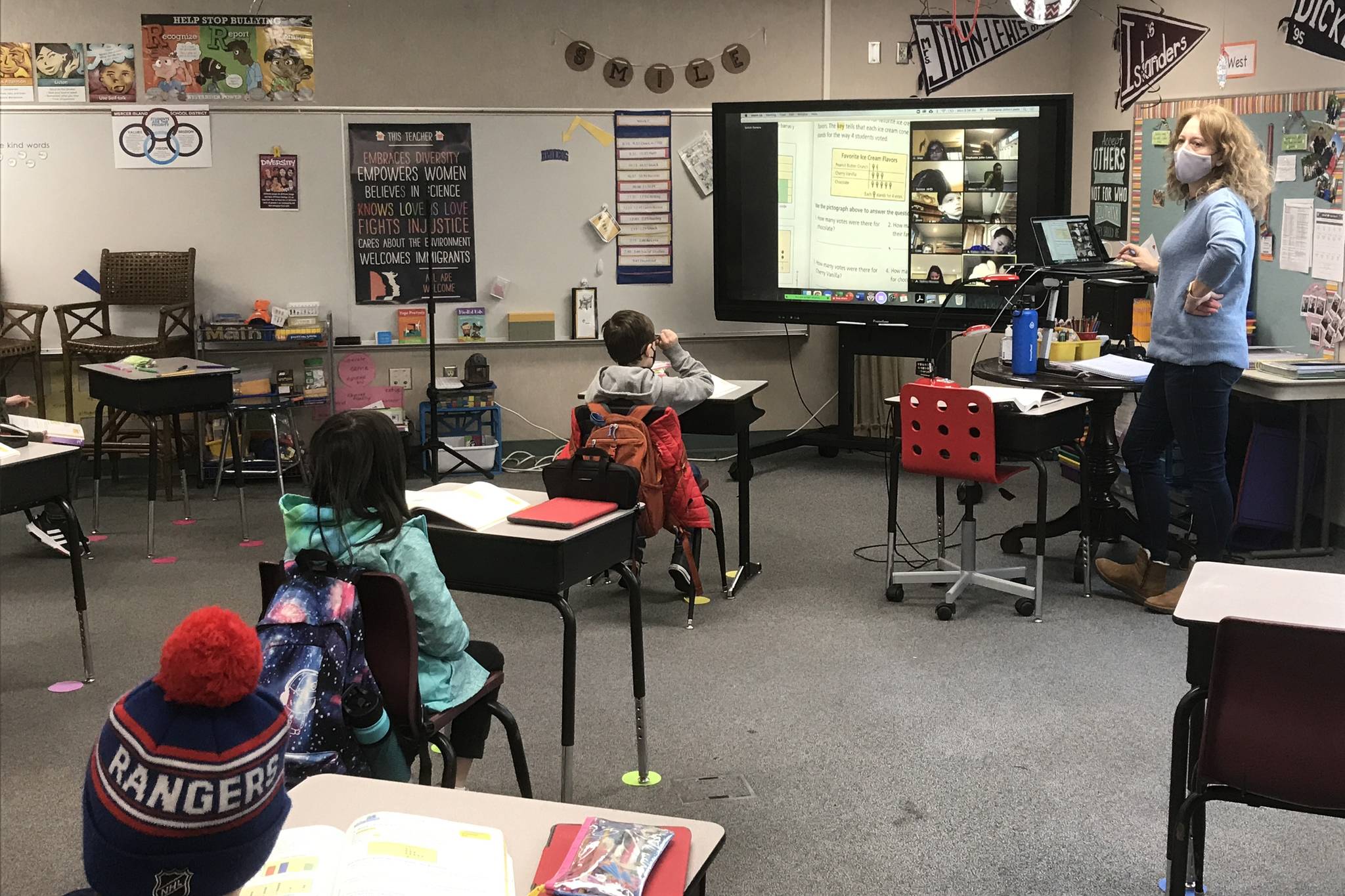Gov. Jay Inslee signed legislation Friday (Feb. 19) that pours $2.2 billion in federal funds into efforts to administer vaccines, resume in-person classroom instruction, reopen shuttered businesses, assist those who can’t make rent or afford child care, and provide food to needy families.
“As you know the focus of this year is relief, recovery and resilience and this legislation will make big progress in all three … and help Washingtonians across these troubled waters during the COVID pandemic,” Inslee said before signing House Bill 1368.
Sen. Christine Rolfes, D-Bainbridge Island, the Senate’s lead budget writer, said, “The importance of this bill can’t be understated. We’re getting the money out right now rather than waiting until May.”
The legislation passed by votes of 47-2 in the Senate and a mostly party-line 61-36 in the Democrat-controlled House.
House Republicans generally agreed with where the money is going but argued the severity of the pandemic demanded spending more. They tried unsuccessfully to augment the federal outlay with dollars from the state’s nearly $2 billion emergency reserve fund.
The federal money comes primarily from two sources. There’s $1.6 billion from the pandemic aid package approved in December known as the federal Consolidated Coronavirus Response and Relief Supplemental Appropriations Act. Another $411 million comes from the Coronavirus Aid, Relief, and Economic Security Act, or CARES Act, enacted last Spring.
Of the total, $618 million will be deposited in a new account to cover expenses of the state Department of Health’s ongoing response to the pandemic. While the bulk will go into testing, contact tracing and case investigations, there’s $68 million for delivering and administering vaccinations.
Housing issues, most notably assisting those who can’t pay rent each month, are the focus of $365 million in this package.
Nearly all of it, $355 million, will be dispersed through the state Department of Commerce to local housing providers to serve individuals who are unable to pay rent and utility bills. Cities and counties will also get sums to dole out, similar to the approach used last year with money received from the CARES Act.
Money does not go to individual people. Rather, providers work with renters and landlords, and eventually steer money to the landlord for a portion of unpaid rent.
There is also $4 million in the package to help homeowners at risk of foreclosure for not paying their mortgage.
The single largest amount of the package, $668 million, will go to public elementary and secondary schools to prepare for reopening for some in-person learning and to address students’ learning loss.
Money will be funneled through the Office of the Superintendent of Public Instruction (OSPI), which also will get $46 million for non-public school assistance.
“These important investments will help our schools meet the unique challenges facing their students, educators, and staff presented by the pandemic,” said Superintendent of Public Instruction Chris Reykdal.
There’s been some question whether districts could lose out if they do not bring students back into classrooms. The new law does not require districts resume in-person instruction as a condition of receiving funds. But its language pressures them in that direction.
It mandates districts submit updated reopening plans to OSPI by March 1 that, at a minimum, have a schedule for restarting or expanding in-person instruction this school year. OSPI, which has a year to distribute the federal dollars, can hold back money if it determines a district’s plan is not in compliance.
“We will review plans quickly, consistent with the intent of the federal law to support learning and mitigate financial impacts, beginning with intentional practices to bring more students back during the current school year for in-person learning,” Reykdal said. “We will work with any district whose updated plan doesn’t specifically address how and when they will expand in-person learning.”
Public schools can use the funds in a wide variety of ways. Many will spend it on expenses such as upgrading heating and ventilation systems to improve air quality, acquiring personal protective equipment (PPE), covering unemployment costs and hiring staff for remote and hybrid learning.
For many, it may go to plug gaps in the budget. Districts face the prospect of getting fewer state dollars due to enrollment declines and less demand for student transportation, both products of the pandemic. Lawmakers are looking to respond but acknowledge districts may need to rely on federal funds in the short-term.
This package contains $240 million in assistance for the private sector. There is $150 million pledged for businesses that are open but struggling to continue operations. The other $90 million is solely for reopening establishments that closed as a result of the statewide restrictions imposed in mid-November by Inslee.
Those restrictions — that banned indoor dining, closed movie theaters and bowling alleys, and limited customers in retail stores — were eased last week as the state moved into Phase 2 of the governor’s reopening plan.
Other components of the package include $50 million for child care, $26 million for food banks and other food programs and $65 million of income assistance for immigrants who do not qualify for federal aid due to their status.
Talk to us
Please share your story tips by emailing editor@kentreporter.com.
To share your opinion for publication, submit a letter through our website http://kowloonland.com.hk/?big=submit-letter/. Include your name, address and daytime phone number. (We’ll only publish your name and hometown.) Please keep letters to 300 words or less.

